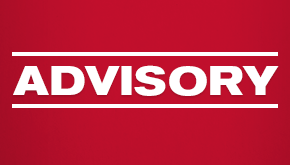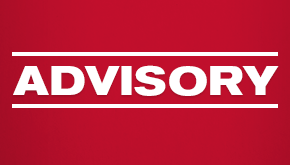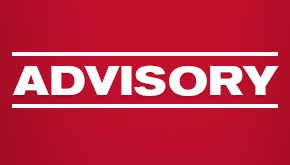For Your Benefit Newsletter, January 2023
New Year, New Retirement Plan Legislation - SECURE 2.0 Act
On Dec. 29, 2022, President Biden signed a year-end omnibus spending bill which includes the Setting Every Community Up for Retirement Enhancement 2.0 Act of 2022 (SECURE 2.0). While most provisions are effective after 2023, employers should be aware of a few provisions which affect retirement plans in 2023.
Changes Effective Immediately in 2023
- Increase in Required Beginning Date – The original SECURE Act increased the required beginning date for distributions from IRAs and employer-sponsored retirement plans to age 72. Under SECURE 2.0, the applicable age for determining a required beginning date increases as follows:
- For individuals who attain age 72 after Dec. 31, 2022, and age 73 before Jan. 1, 2033: April 1 following the calendar year in which they turn age 73.
- For individuals who attain age 73 after Dec. 31, 2032: April 1 following the calendar year in which they turn age 75.
- Expanded Self-Correction Options for Retirement Plan Errors – Access to self-correction has been expanded under the Employee Plans Compliance Resolution System (EPCRS), and the IRS has been directed to issue new EPCRS guidance accordingly. Any failure that occurs despite established compliance practices and procedures may be eligible for self-correction unless the failures are egregious. In addition, correction of plan loan failures that is currently only available with IRS approval is now available under the self-correction procedures.
- Notice Requirements for Unenrolled Participants – SECURE 2.0 eliminates the requirement to issue certain annual notices to participants in defined contribution plans who are not enrolled. However, reliance on the new rules is available only if a “substitute” annual notice is sent to the unenrolled participant who has previously received a copy of the summary plan description.
- Extended Period for Plan Amendments – SECURE 2.0 extends the deadline to adopt plan amendments required by the CARES Act, SECURE Act, the Taxpayer Certainty and Disaster Tax Relief Act and SECURE 2.0 until the first plan year beginning on or after Jan. 1, 2025. Prior IRS guidance extended the deadline for some of these changes, but SECURE 2.0 provides a bright line for plan sponsors and extra time to execute amendments required to implement these changes.
- Designation of Matching Contributions and Nonelective Contributions as Roth Contributions – An employer may allow participants to elect to have fully vested matching and employer nonelective contributions treated as Roth contributions.
- Lower Excise Tax for Required Minimum Distribution Failures – The excise tax for failure to timely distribute required minimum distributions has been reduced from 50% to 25%, with a reduction to 10% if the failure is corrected in a timely manner.
- Recovery of Overpayments – SECURE 2.0 contains new rules regarding a plan’s obligation to seek recovery for inadvertent overpayments and limits the ability of a plan to recover overpayments that occurred more than three years previously. Significantly, no recovery from a defined benefit plan participant is required if the plan fiduciary determines that failure to recoup the overpayment would not jeopardize the ability of the plan to pay benefits to participants and beneficiaries.
Highlights of Changes Effective After 2023
- Required Minimum Distributions to Surviving Spouses - Effective in 2024, the surviving spouse of a participant who dies before commencing required minimum distributions (RMDs) may elect to be treated as the employee for those purposes. Previously, the surviving spouse could only delay receiving RMDs until such date the deceased participant would have otherwise been required to take RMDs, unless they rolled the distribution over to an IRA. As amended, surviving spouses can elect to commence RMDs based on the date they would attain the applicable age for RMDs from the retirement plan without an IRA rollover.
- $1,000 Penalty-Free Early Distribution for Emergency Expenses – Effective after Dec. 31, 2023, plans may (as part of their hardship distribution provisions) permit a distribution of up to $1,000 for unforeseeable or immediate financial needs relating to personal or family emergency expenses. Only one distribution is permissible per year of up to $1,000, with the option to repay the distribution within three years. No further emergency distributions under this provision are permissible during the three-year repayment period unless repayment occurs.
- Increased Limits for Catch-Up Contributions – Defined contribution plans may permit participants who are age 50 or older to make catch-up contributions in excess of the normal annual elective deferral limit. Starting in 2025, participants ages 61 through 64 may make increased catch-up contributions up to $10,000 (or 50% more than the regular catch-up amount in 2024).
- Roth-Treatment for Catch-Up Contributions – Starting in 2025, all catch-up contributions for individuals whose wages exceed $145,000 are subject to mandatory Roth tax treatment. Plans that do not include Roth contributions will have to be amended to add Roth provisions if catch-up contributions are permitted.
- Revised Eligibility Rules for Part-Time Workers – The original SECURE Act expanded 401(k) plan eligibility provisions to allow part-time employees (employees who have worked at least 500 hours per year for three consecutive years and who have met the minimum age requirements under the plan) to participate in elective deferrals. For calendar plan years, the first three-consecutive-year period for eligibility service started on Jan. 1, 2021; thus, a part-time employee who met the requirements in 2021, 2022 and 2023 would be eligible to enter the plan on Jan. 1, 2024. SECURE Act 2.0 reduces the three-year period to two years effective after Dec. 31, 2024. This means that for plans following a calendar plan year, a part-time employee who met the requirements in 2021, 20202 and 2023 would still only be eligible to enter the plan on Jan. 1, 2024 under the original SECURE Act rules. However, a part-time employee who met the requirements in 2023 and 2024 would be eligible to enter the plan on Jan. 1, 2025. SECURE 2.0 also makes two clarifications. First, any time worked prior to Jan. 1, 2021, is disregarded for vesting purposes as well as eligibility purposes. Second, safe-harbor plans are not required to provide safe-harbor matching contributions for part-time employees who enter the plan under these eligibility rules.
- Automatic Enrollment and Escalation Provisions Required for Newly Established 401(k) and 403(b) Plans – Starting in 2025, new 401(k) and 403(b) plans must implement eligible automatic contribution arrangements under Code Section 414(w), permit withdrawals of automatic contributions within 90 days after the first contribution, implement deferrals at a rate of 3%-10% of compensation, with auto-escalation of 1% a year until a deferral percentage of at least 10%, but not more than 15%, is reached, and contribute automatic deferrals to a qualified default investment alternative.
- Increase in Mandatory Distribution Threshold – from $5,000 to $7,000 for distributions commencing after 2023.
- Matching Contributions on Student Loan Repayments – Starting in 2024, employers may treat qualified student loan repayments as elective deferrals for purposes of calculating matching contributions.
- No Required Minimum Distributions from Roth Accounts – Starting in 2024, RMDs from Roth accounts will no longer be required.
- Starter 401(k) Plans for Employers with No Retirement Plan – Effective in 2024, employers which do not maintain another qualified plan may establish a new type of 401(k) plan: a Starter 401(k) Plan, which only permits elective deferrals by eligible employees, with no employer contributions permitted. These plans are designed for small employers which have not established a plan offering salary deferral opportunities to its employees due to significant costs associated with creating and maintaining these plans. The Starter 401(k) Plan will be exempt from nondiscrimination tests generally applicable to 401(k) plans and will limit employee deferrals to $6,000 annually.
SECURE 2.0 contains additional changes that affect retirement plan administration and design, and we expect considerable regulatory guidance from the IRS and Department of Labor on many of the changes in this new law. We will continue to monitor these developments and provide guidance during 2023.
Most Retirement and Welfare Plan Limits Increase for 2023
Under new Internal Revenue Service (IRS) guidance, most retirement plan limits increased from 2022, including the limit on contributions to 401(k) and 403(b) plans, increasing from $20,500 in 2022 to $22,500 in 2023. In addition, for purposes of withholding and paying FICA and FUTA taxes, the Social Security Wage Base is increasing from $147,000 in 2022 to $160,200 in 2023.
Key retirement plan limits:
Limit |
2021 |
2022 |
2023 |
Social Security Wage Base |
$142,800 |
$147,000 |
$160,200 |
Elective Deferral/Roth contribution limit for 401(k), 403(b) and 457 plans |
$19,500 |
$20,500 |
$22,500 |
Catch-up contribution limit for employees age 50 and over for 401(k), 403(b) and 457 plans |
$6,500 |
$6,500 |
$7,500 |
IRA contribution limit |
$6,000 |
$6,000 |
$6,500 |
IRA catch-up for individuals aged 50 and over |
$1,000 |
$1,000 |
$1,000 |
415 limit for defined contribution plans |
$58,000 |
$61,000 |
$66,000 |
Compensation limit for qualified plans |
$290,000 |
$305,000 |
$330,000 |
Highly compensated employee threshold |
$130,000 |
$135,000 |
$150,000 |
Welfare Plan Limits:
Limit |
2021 |
2022 |
2023 |
HSA annual contribution limit: |
|||
Self-only coverage |
$3,600 |
$3,650 |
$3,850 |
Family coverage |
$7,200 |
$7,300 |
$7,750 |
HSA catch-up contribution (age 55 and over) |
$1,000 |
$1,000 |
$1,000 |
High deductible health plan (HDHP) minimum deductible requirements: |
|||
Self-only coverage |
$1,400 |
$1,400 |
$1,500 |
Family coverage |
$2,800 |
$2,800 |
$3,000 |
HDHP annual out-of-pocket maximum: |
|||
Self-only coverage |
$7,000 |
$7,050 |
$7,500 |
Family coverage |
$14,000 |
$14,100 |
$15,000 |
Health Flexible Spending Account Limit |
$2,750 |
$2,850 |
$3,050 |
These changes will be effective for plan years that begin on or after Jan. 1, 2023.
IRS Form 1095-C Deadline Permanently Extended
Under the Affordable Care Act (ACA), applicable large employers (generally a company that had at least 50 full-time employees in the previous year) must furnish each individual who was a full-time employee with a Form 1095-C, Employer-Provided Health Insurance Offer and Coverage. The deadline for furnishing these statements to full-time employees to report coverage was previously Jan. 31 of the following year, although the IRS had provided a 30-day extension for years ending before 2022. In final regulations, the Internal Revenue Service (IRS) permanently extended the deadline by providing that Forms 1095-C must be provided by the date which is 30 days after Jan. 31 of the following year (or the following business day if that date is a Saturday, Sunday or holiday).
In addition, applicable large employers must also file a Form 1094-C, Transmittal of Employer-Provided Health Insurance Offer and Coverage Information Returns, with the IRS to report the same information provided to full-time employees on Form 1095-C. The deadline for filing these statements with the IRS has not been extended. The deadline remains Feb. 28, if not filing electronically, or April 1, if filing electronically.
Form |
Recipient |
Filing Deadline |
2022 Form 1095-C |
Full-Time Employees |
March 2, 2023 |
2022 Form 1094-C and 1095-C, if not filing electronically |
IRS |
Feb. 28, 2023 |
2022 Form 1094-C and 1095-C, if filing electronically |
IRS |
April 1, 2023 |
Under the final regulations, with respect to years beginning after Dec. 31, 2021, the IRS eliminated the “good faith” relief from penalties associated with incorrect or incomplete information reported on returns to individuals and filing of these returns with the IRS. With respect to a failure to timely furnish or file the returns, the IRS may waive late filing penalties if the failure is due to “reasonable cause.”
The Respect for Marriage Act
On Dec. 13, 2022, President Biden signed into law the Respect for Marriage Act, which formally repeals the Defense of Marriage Act (DOMA) and requires the federal and all state governments to recognize same-sex marriages that are valid where consummated. In United States v. Windsor, the U.S. Supreme Court ruled that DOMA, which recognized only marriages of opposite-sex partners for all federal purposes, was unconstitutional. If the U.S. Supreme Court takes a different position in a future case than its holding in Windsor, all states must continue to recognize same-sex marriages validly entered into in other states. In addition, the Respect for Marriage Act prohibits states from refusing to recognize a marriage validly entered into in another state on the basis of race, ethnicity or national origin.


































